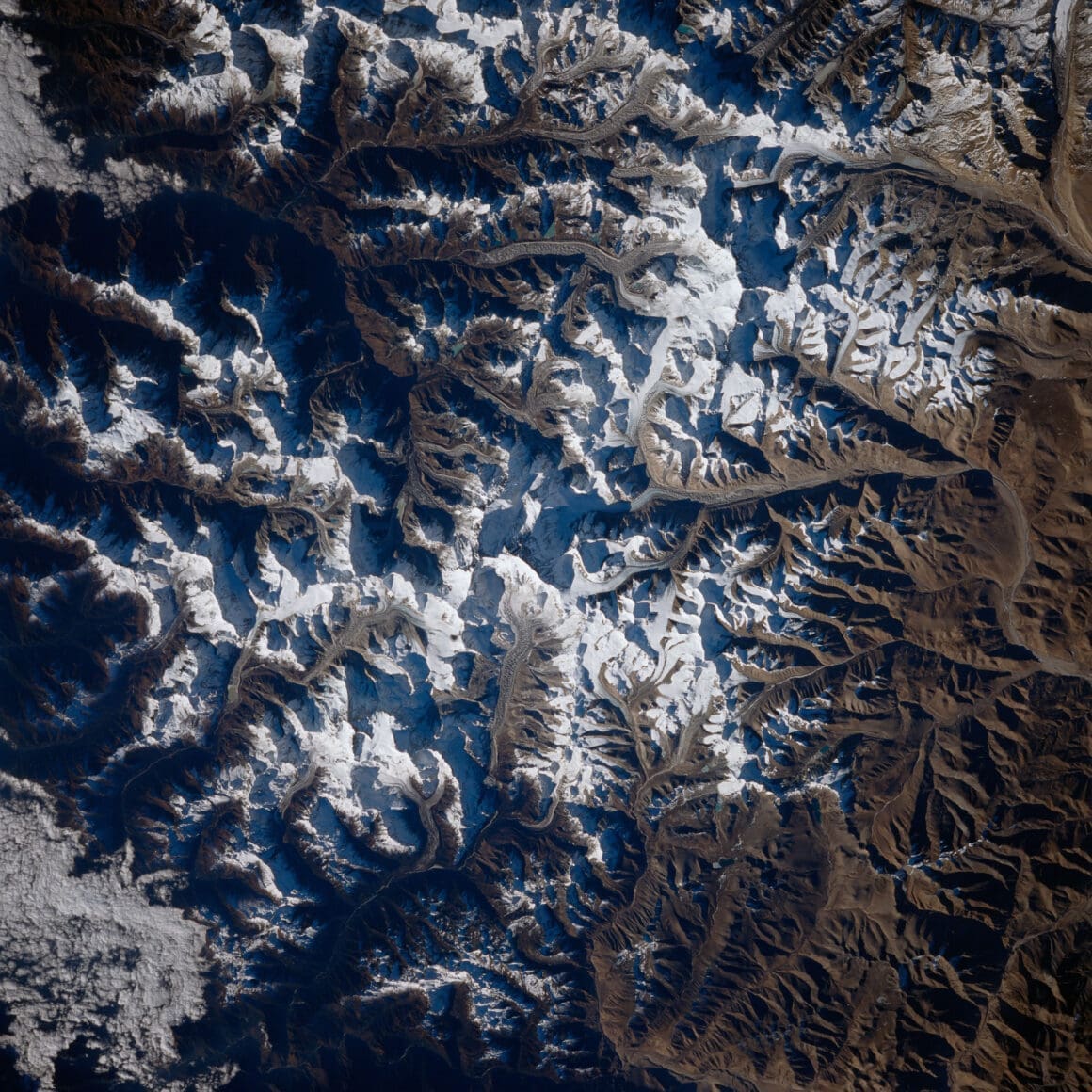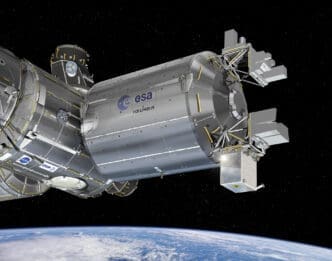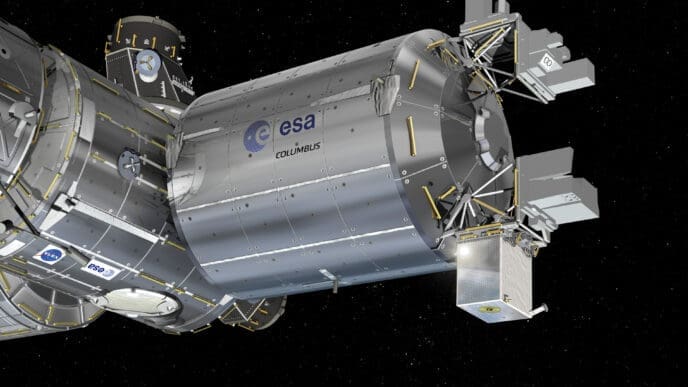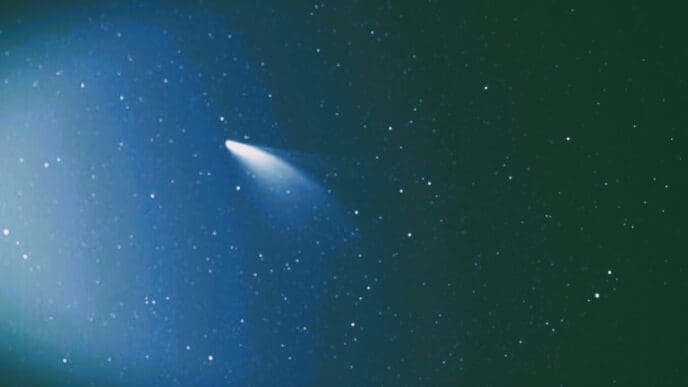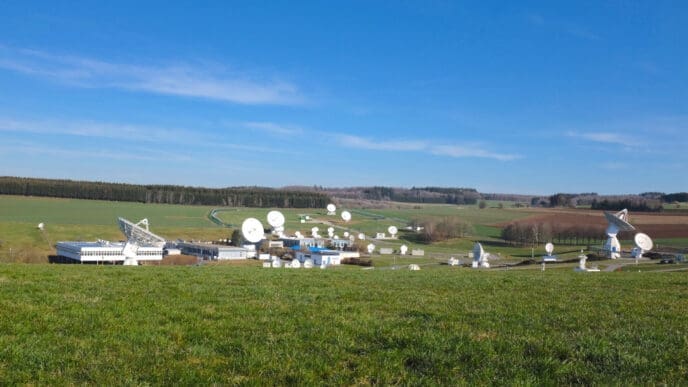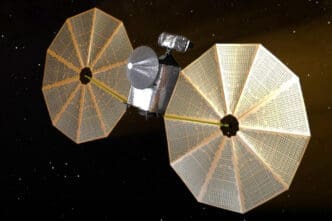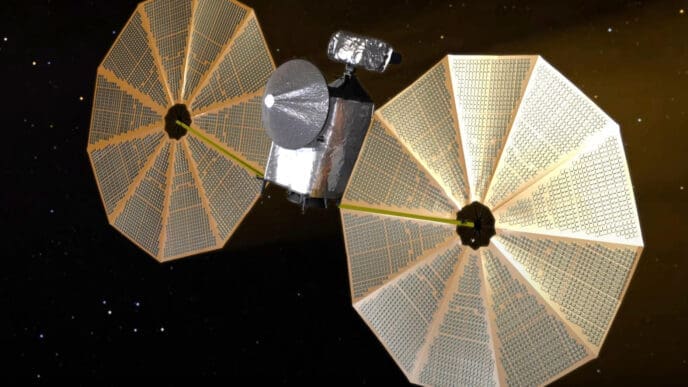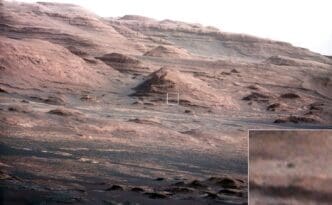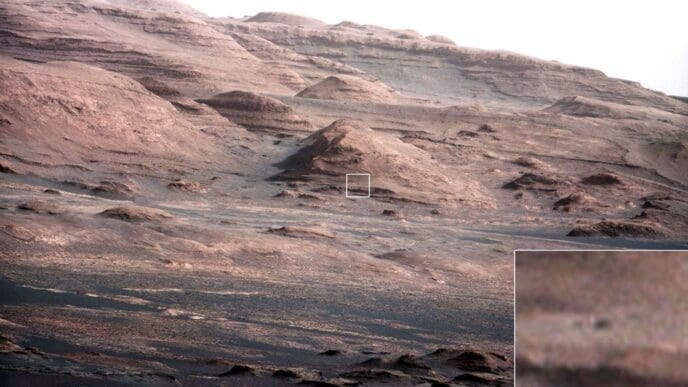Peering down from the heavens, the grandeur of Mount Everest is captured in an extraordinary snapshot from space. Imagine a bird’s eye view, showcasing this majestic giant rising 29,028 feet into the sky. It’s not just any mountain; it’s the world’s tallest. This awe-inspiring moment was seized by the crew aboard Space Shuttle Columbia.
On November 30, 1996, a breathtaking view of the mighty Mount Everest was immortalized during Columbia’s STS-80 mission. The photograph unveils Everest as never seen before, accompanied by a stunning array of glaciers. This celestial glance offers a glimpse into the unparalleled beauty and sheer scale of this natural wonder.
Capturing Everest from Afar
Space photography is a marvel of modern technology, allowing us to witness Earthly wonders from unimaginable heights. During the Columbia’s STS-80 mission, astronauts had the unique opportunity to photograph Mount Everest. From their vantage point, the mountain stood as an emblem of Earth’s might and magnificence.
The image snapped from the shuttle showcases the enormous expanse of Everest surrounded by glacial formations. It’s a view few are privileged to see, bringing the colossal mountain closer to those of us grounded on Earth. The importance of satellite and shuttle images in showcasing natural beauties and studying our planet’s geography becomes evident here.
The Significance of Everest’s Image
Why is this image so significant? For starters, it’s a rare perspective that combines human innovation with nature’s splendor. Capturing Everest from space provides a new angle to appreciate its towering presence and geological prominence. It’s not just a photo; it’s a testament to human curiosity and technology.
This image elevates our understanding not just of Everest, but also of Earth’s topography. Space missions like Columbia’s are instrumental in contributing data for scientific research and environmental monitoring. Such images offer crucial insights into glacial movements and geological changes over time.
Space Shuttle Columbia: A Historic Mission
The STS-80 mission of the Space Shuttle Columbia was marked by remarkable achievements. It was the final shuttle flight of 1996, and it left a lasting impression with its contributions.
During this mission, not only was Everest captured, but two free-flying research spacecrafts were successfully deployed and retrieved. These accomplishments highlight the mission’s success and further cement its place in history. The ability to capture such extraordinary images is just one facet of the mission’s overall achievements.
For researchers and enthusiasts alike, the images taken during STS-80 are invaluable. They provide insights into both technological advancements and natural wonders, sparking interest and awe in equal measure.
Glacial Observations and Discoveries
Alongside Mount Everest, the numerous glaciers visible in the image are of significant interest. They stretch out around the peak, shimmering under sunlight as seen from space. This perspective is rare, offering observations that are otherwise inaccessible.
These glacial formations capture the dynamics of Earth’s ice systems, providing a basis for studying climate patterns and environmental changes. Understanding glacier movements and their responses to climate shifts is crucial for climate science and prediction. The data drawn from such images extend beyond mere aesthetics, feeding into detailed climatic models.
Glaciers are like the Earth’s natural barometers, and their visible movements in these images are monitored closely by scientists. The Columbia’s snapshot acts as a pivotal point for ongoing research into these dynamic ice structures.
Technological Marvels Behind the Lens
Space photography wouldn’t be possible without groundbreaking technology. The Columbia’s images of Everest represent the synergy between innovation and exploration. Cameras designed for space need to withstand harsh conditions while delivering clear and detailed imagery.
The specialized equipment on board the shuttle ensures that every snapshot taken contributes valuable data. It’s a blend of engineering prowess and scientific ambition, demonstrating how technology extends our reach to even the most remote natural wonders.
Each image we see, capturing views like those of Everest, showcases how far technological advancements have propelled our exploration capabilities. It’s a small step for a camera, but a giant leap for observational science.
Mount Everest’s Timeless Appeal
Mount Everest, an icon of natural beauty, continues to captivate adventurers and scientists alike. From its base camp to the highest summit, the mountain is a testament to Earth’s geological history.
Everest’s image from space magnifies its allure. It’s not just a mountain to climb or a sight to marvel at; it’s a symbol of Earth’s incredible landscapes. The perspective from space adds a layer of wonder, drawing viewers into its vastness.
As we continue to explore and document our planet from different angles, Everest remains a pinnacle of our natural heritage. The Columbia’s image stands as a reminder of its enduring majesty.
The Role of Space Missions in Earth Study
Space missions like Columbia’s STS-80 are crucial for advancing our understanding of Earth’s landscape. They provide eye-opening views that transform how we study our planet.
The Columbia mission’s images have contributed significantly to geographical and environmental research, offering snapshots that are both scientifically valuable and visually striking. These missions highlight the balance between technological achievement and the exploration of Earth’s natural wonders.
Every space mission adds a piece to the complex puzzle of our planet’s ecology and geography. Through these endeavors, we gain a better grasp of Earth’s processes and how they influence the environment.
A Shared Cosmic Perspective
Seeing Mount Everest from space invites viewers into a shared cosmic perspective that transcends borders. It’s an image that unites awe with scientific inquiry, reminding us of our place in the universe.
This view from space encourages us to look beyond our immediate surroundings and consider the global picture. It’s a moment captured forever, pulling us into a larger narrative of planetary exploration and appreciation.
While the beauty of Everest is timeless, the perspective offered from space captures it in a new and enlightening light. Such images serve as a bridge, connecting humanity to the broader cosmos.
Looking at Mount Everest from space is more than just an image; it’s a journey into the heart of Earth’s natural wonders. The awe-inspiring view serves as a reminder of the beauty that exists worldwide, waiting to be discovered and cherished.

